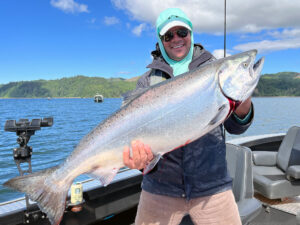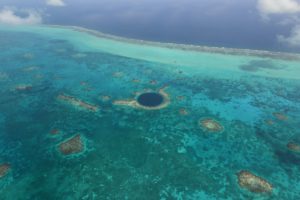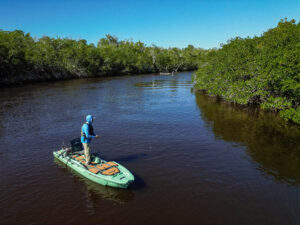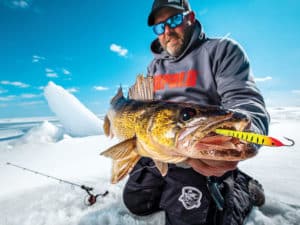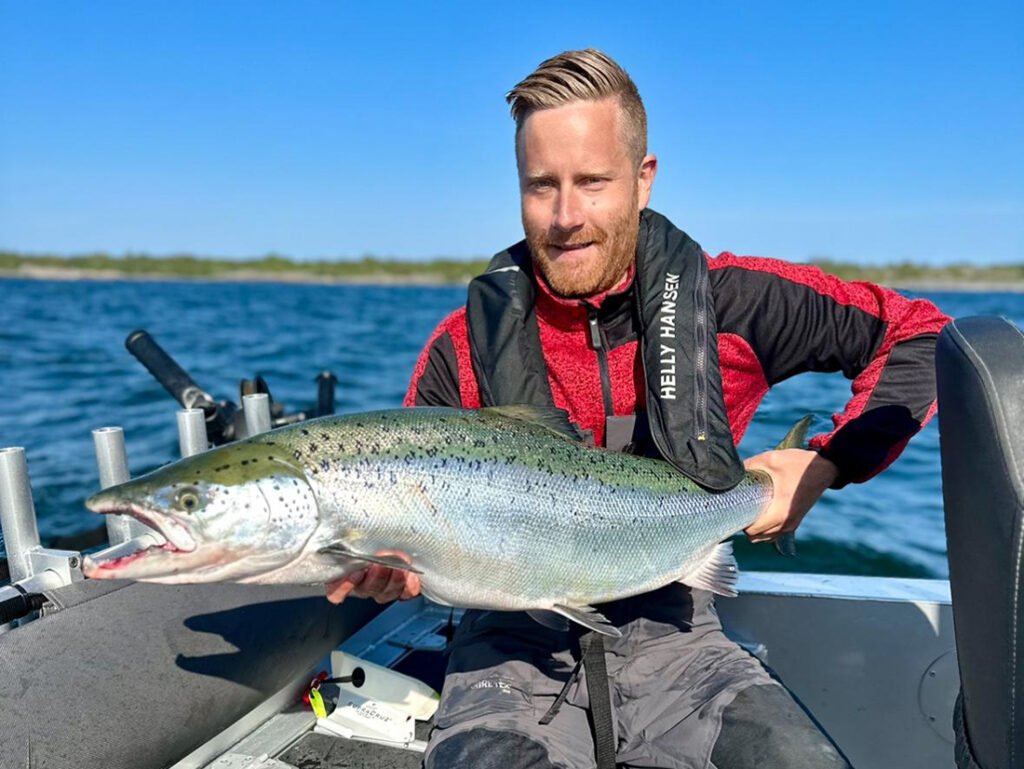
“Straight ahead is Poland and to the left is Estonia,” said Capt. Björn Persson, as he navigated the calm waters en route to the Baltic Sea. We were on our way to catch Baltic salmon, which are the same species as Atlantic salmon — ray-finned fish in the Salmonidae family. The Baltic’s Atlantic salmon are known for their massive size, with world records caught in Sweden, Denmark, Poland and Russia. And we were targeting the big ones: 30 pounds and up.
We left minutes prior from the port of Trosa, located about an hour southwest of Stockholm. The boat ride through the Stockholm archipelago (Skärgårdens in Swedish) was calm and picturesque with World War II cannons visible on several of the small islands. This area forms the second largest archipelago in the world, containing approximately 30,000 islands. On this day, there were just as many sailboats as motorboats on the water.
Within 20 minutes, we arrived at the deep waters of the Baltic Sea. Persson switched over to the trolling motor. One by one, the captain let out line on his Abu Garcia Alphamar LC level winds, line-counting reels with large artificial spoons rigged to them.
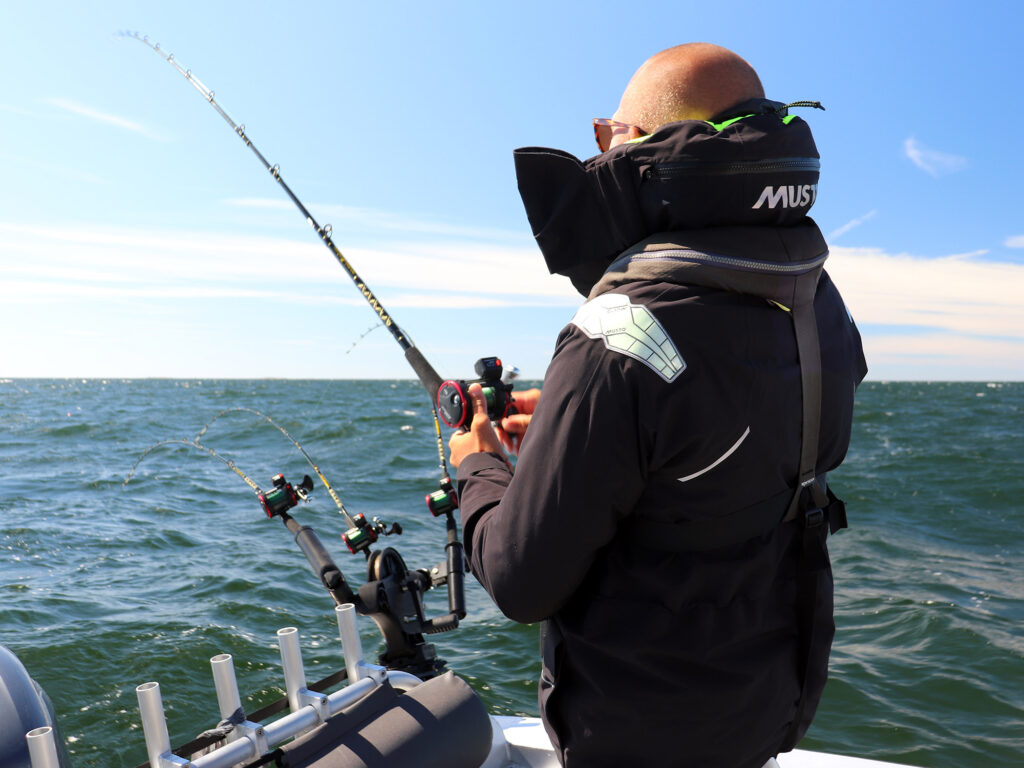
Unsure of the exact depth of the Atlantic salmon, we set out eight lines at depths of approximately 130, 165 and 195 feet. The captain used fluorescent planer boards to ensure the lines did not tangle and to help stagger the lines at different depths. Four more lines were set deeper, clipped to a pair of downriggers off the stern of the 21-foot center console. With twelve lines out in total, we were optimistic.
Soon enough, a rod bent over and the captain uttered something in Swedish that probably meant “fish on.” I grabbed the rod. The fight was fun, but I quickly reeled the fish to the boat. The captain looked at it and immediately flipped it off the line. We were on a mission for giant salmon, and Persson wanted a 2-plus-footer to keep, not what we had landed. Not the fish we were looking for. No time for pictures.
“You should have been here last week,” summed up the reminder of the day. Eventually time ran out, and the captain cooked up hamburgers and hotdogs on the bank of a small island. He told stories of giant Baltic salmon he caught in these waters, the size of the fish only limited by the length his arms stretched.
When to Go
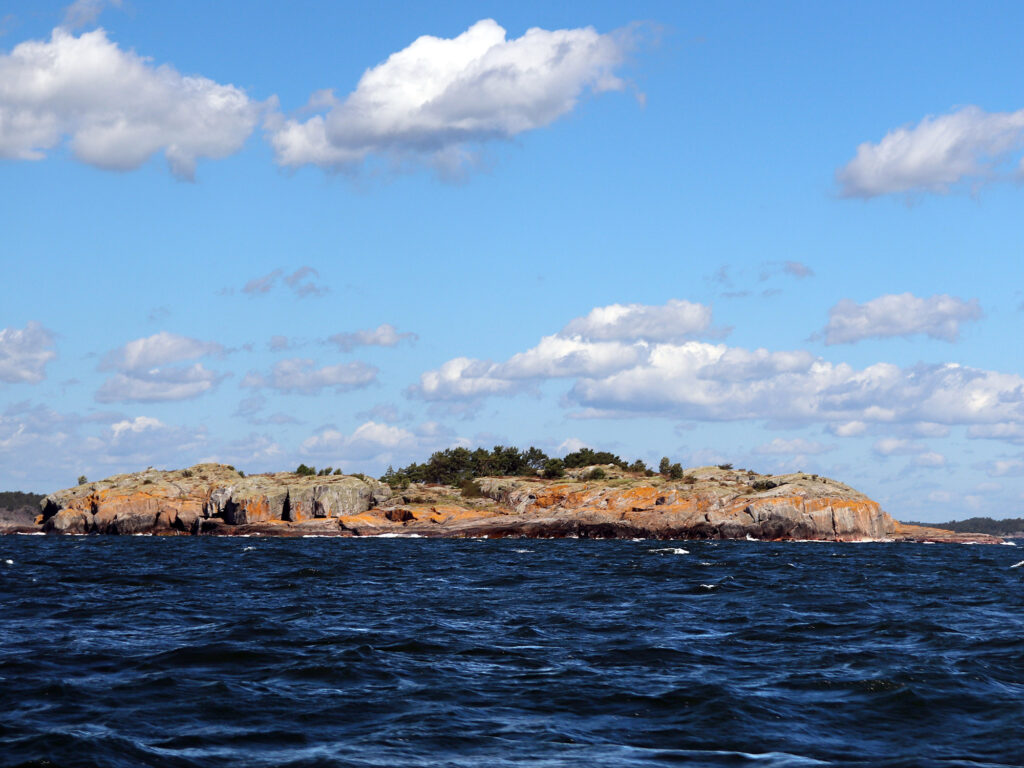
Baltic Salmon season in Sweden is from June through August. It’s also a great time to catch northern pike and hundreds of European Perch in the many lakes in Sweden. If you are looking to make it a family trip, or want to do some sightseeing, I recommend going during the festival of midsummer that marks the summer solstice. That’s when one of the earth’s poles has its maximum tilt toward the sun and thus the longest day of sunlight in the year. Midsummer also happens to be one of the biggest holidays in Sweden. The locals dress in traditional Swedish outfits and sing and drink throughout the day.
Where to Go and How to Get There
The New York airports typically have several direct flight options into Sweden’s capital of Stockholm. If your bucket list is to see a pristine 196-foot, 400-year-old Viking warship, visit Vasa Museum in Stockholm. From there, take a car or train to Trosa, a lovely fishing and coastal town about an hour southeast of Stockholm. The area offers local markets to buy fresh seafood and produce from vendors and plenty of restaurants.
What to Expect
Visiting Sweden in the summer is similar to going to the Great Lakes or Canada, so bring plenty of layers in case a hot summer day turns cool. A good day trolling for Baltic salmon might result in one or two keepers. Mix it up by scheduling a day of catching lots of perch and large pike at nearby lakes. Don’t worry, most of the locals speak English and are happy to point tourists in the right direction.


